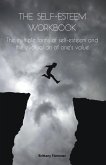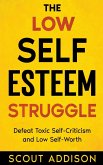The coexistence of extraordinary gifts and exceptional impairment residing within the same individual is an inherently curious contradiction. Empirical research on gifted students with one or more disabilities, termed twice-exceptional, is limited. The purpose of this investigation was to explore the role of twice-exceptionality on key constructs related to identity development and self-regulation. This study examined developmental changes in students' self-esteem ratings and locus of control ratings from eighth grade through twelfth grade, and compared students identified as twice-exceptional with their peers who were identified as gifted only, disability only, or non-identified (ie, a group of "typical" students). Participants were sampled from an existing dataset - the National Educational Longitudinal Study. Measures included questionnaire items adapted from the Rosenberg Self-Esteem Scale (1965), and from Rotter's Internality- Externality Scale (1966). Results of a two-way mixed design MANOVA revealed no differences between groups on a combination of self-esteem and locus of control ratings, meaning that developmental patterns over time were similar across all ability classifications. Students in the gifted-only group reported the highest levels of self-esteem and the most internalized locus of control, whereas students in the disability-only group reported the lowest self-esteem and most externalized locus of control. Significant differences were revealed between average ratings of twice-exceptional students and ratings of their peers. This manuscript concludes with a discussion of the study's limitations, implications drawn from the study's findings, and directions for future research.








